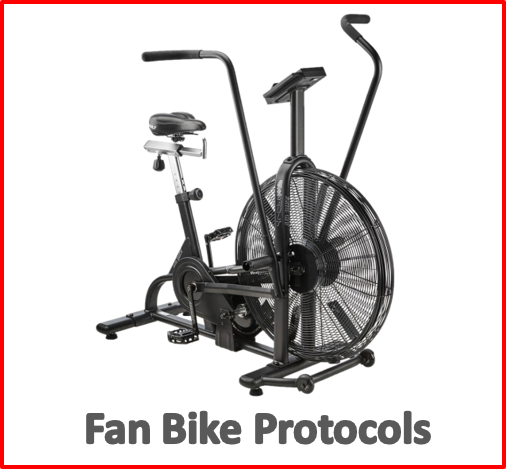Juggling Sprinting & Resistance Training
Published: Fri, 08/27/21

Sprinting and strength training go together like ham and eggs, fish & chips or Mick and Keith. Speed and strength are inexorably intertwined, two sides of the same coin. There can be no speed without strength: strength is used to overcome inertia; strength generates acceleration and adding strength improves all-out top end speed. Progressive resistance training has been an integral component of the elite sprinter’s training template for decades.
To go faster, become stronger. To go way faster, become way stronger. The event creates the physique and ergo, great sprinters are always muscled-up. Look at any international level sprinter and the distinguishing commonality, the identifying characteristic is leanness combined with a substantial amount of lean muscle mass, mostly in the legs and glutes.
The similarities between hardcore lifting and hardcore running are numerous. In both sprint training and strength training all-out bursts of energy and power, max efforts, are performed; it could be an all-out 40 yard sprint or an all-out set of high-bar squats. These short, super-intense efforts are interspersed with rest periods. Sprint sessions and hardcore lifting sessions are filled with multiple bursts of maximum effort. The goal (be it lifting or sprinting) is to exceed current best efforts.
- An elite powerlifter will squat and deadlift, train legs and back, once a week. A good lifter’s top set for a deadlift session might be 635 pounds for 3 reps. That set might only last 15 seconds - yet those 15 seconds will trigger ALL the deadlift strength and muscle gains for that entire week. Nothing else matters except those top sets wherein current capacities are assaulted in some way. Everything prior is windup and throat-clearing.
- An elite sprinter might go all-out, 100% or more, once a week, and that sprint session might consist of eight all-out sprints of 40 yards, the sum-total of time the sprinter is actually sprinting might not exceed 60 cumulative seconds and of the 60 seconds of sprinting, only 25 seconds would be run at 100% or more – yet those 25 seconds operating at 102% of capacity will trigger ALL the all-out top speed gains for that entire week.
Combining sprinting with strength training is smart, appropriate, and handled right can be incredibly effective. However, great care and attention need be paid to the construction of the training split. Weight training can destroy a sprint session. Trying to run all out on fatigued legs, glutes or low back muscles is ineffectual and a waste of time. It is also potentially injurious to run at 100% + of diminished capacity.
Creating the integrated strength/speed training template
Combining sprinting and weightlifting requires a subtle touch. The challenge is to design and create a non-conflicting training split. The eternal conflict for the hard runner that lifts hard is how to sequence heavy leg training (purposefully fatiguing calves, hips, thighs, lower back, abs) with sprinting?
Heavy back training (deadlifts, cleans, rows, heavy pulls) also stresses and fatigues legs, hips, and lower back. How does the athlete schedule sprint sessions so that they are not run on legs prefatigued by a heavy leg or back training? There is no sense attempting to sprint all out on fatigued legs or glutes. When creating the integrated strength training and sprint templates, first, design the two individualized systems.
Strength Training Split Questions
Session content: what exercises? sets? reps?
Session frequency: how often?
Session timing: what time of day?
Periodized: part of a larger plan?
Sprint Training Split Questions
Max effort frequency how many times a week sprinting at 100% +?
Content of non 100% sessions what is done on non 100% day?
Sprint session timing what time of day?
Periodized? stair-step speed imperceptibly upward?
Strength
Legs and back are trained hard once weekly. Are the legs and back trained on the same day or different days? If legs and backs are trained on different days, they should be placed at opposite ends of the training week. If legs are blasted on Sunday, then heavy back work should not be done until Wednesday or Thursday.
One Day Training Split
Sunday: Squat, bench press, deadlift, overhead press
Two Day Training Split
Sunday:
Squat, front squat, leg curls, calf raises
Bench press, triceps
Thursday:
Power clean, deadlift, Romanian deadlift
Overhead press, biceps
Three Day Training Split
Sunday: Squat, front squat, leg curls, calf raises
Wednesday: Bench press, arms (superset bis & tris)
Friday:
Power clean, deadlift, Romanian deadlift
Overhead press
Speed
Strength and speed have many overlapping similarities. The way in which we improve our top end, all-out speed is to run when totally and completely rested. Highly trained, extremely fit sprinters might have multiple weekly all-out efforts in them. Sprinting can be subdivided…
- Acceleration how fast can you get to 100% of current sprint capacity
- top speed once at 100%, how long can you stay there?
For the all-around athlete looking to include some real running into his training template, start with one all-out sprint day a week. There are additional run drills, assistance exercises, protocols that are used to improve acceleration, technique, and conditioning - without conflicting with the development of top speed.
To run as fast as possible, that athlete needs to run on fresh legs. Can an athlete sprint, all out, the day after a body-crushing leg or back training session? No. Commonsense and decades of empirical experience tell us that running hard the day after and all-out leg or back training session is a real bad idea. You are running all-out on fatigued legs.
It gets complicated. If you are training legs and back on different days of the week, when, during the training week, is the body fresh enough to slip in an all-out sprint session. This is a thorny dilemma – how do you juggle the subtle balance between hard running and hard lifting? And do so in a way that optimizes both? What constitutes the ideal sprint training week and what constitutes the ideal strength training week? Can
the two be combined without degrading workout performance?
Combined Strength/Sprint Weekly Training Template
Sunday: Leg training
Monday: Easy long run, 30-40 minutes, flush muscles of toxins & waste products, light, easy, fun
Tuesday: triple length sprints, eight sprints, 75% to 85% of 100% capacity
Wednesday: double length sprints, eight sprints, 85% to 95% of 100% capacity
Thursday: Back training – no running of any kind
Friday: easy, long run, 30-40 minutes, flush muscles of toxins & waste products, light, easy, fun
Saturday: all out 100% all-out sprint day, eight sprints, 97% to 102% of 100% capacity
- Sprint assistance work: if all-out sprinting is done once weekly (at least initially) then what if anything can or should be done to “assist” all out sprinting without engaging in it? One strategy is to work on the acceleration and run techniques.
- Double/Triple-length sprints: begin with short sprints of 20, 30 or 40 yards before moving to 50 and 60-yard dashes. 100s and 220 are too long for beginners. Master short sprints first. If your sprint length is 30-yard sprints, 60-yards is double length; 90-yards is triple length.
- Use the longer length sprints to ingrain ever-better sprint technique. Longer length runs done at lesser velocity allows for thoughtful, inflight technical adjustments. Longer distance sprints improve cardio conditioning; fitter athletes can train harder, longer, and more frequently.
- The double-length and triple-length sprints add a superb conditioning element. By running further using lesser velocity, sprint technique is refined. Tendons, ligaments, muscles, connective tissue, fascia, and cartilage are hardened and toughened.
Make haste slowly. Sprinting, like hardcore lifting is violent and dangerous. Having said that, those that successfully meld effective resistance training with serious sprinting will take every aspect of their physical being to the next level of physique and performance.
For more information on cardio innovators and protocols, click on the links below.


If you have any questions please click here. For more information on training techniques and tactics click on our Training Resource Guide. Follow Us using the icons
below.



Thanks
Stacy Gallagher
Get Strong! Live Long!